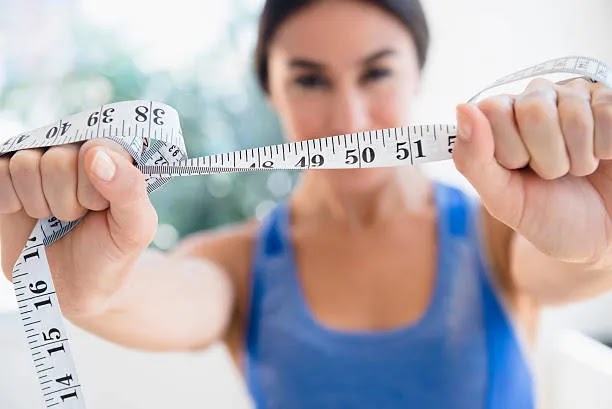Every weight-loss enthusiast desires to lose belly fat, but there's a reason why having much fat in the abdominal region, especially visceral fat, might be dangerous. Our bodies store fat, so how does a growing waistline increase your risk of chronic illness?
LOCATION, LOCATION, LOCATION
Depending on where your body fat is deposited, it affects your health. While most fat on other regions of our body (such as our arms, legs, and buttocks) is classified as "subcutaneous," belly fat is more likely to be classified as "visceral."
PRESSABLE VS. PINCHABLE
The pinchable, squishy fat between your skin and muscle that keeps you warm, cushions you against shock, and stores additional calories is known as "subcutaneous fat." "Visceral fat" stores calories, but because it is found in and around your organs, it is less pinchable. When you press it, it's complicated (rather than mushy) because it's tucked deep within the abdominal region.
PROXIMITY
Fat is a living tissue capable of creating and releasing hormones that affect your other organs and store calories. Because visceral fat is located near our organs, it removes these chemicals at an inconvenient location. More visceral fat raises LDL (often known as "bad") cholesterol and blood pressure. Visceral fat can also make you less insulin sensitive, increasing your chances of developing Type 2 Diabetes.
DISTINGUISHING
BAD BELLY FAT
Even if you're slim, you can have visceral fat in your abdomen—being "small" doesn't always imply that you're healthy. Short of an expensive CT scan, there's no surefire way to identify visceral from subcutaneous fat, but it's vital to obtain a rough estimate of your visceral storage. Here are some tips to help you figure out where your belly button is:
PEARS AND APPLES: "What does fruit have to do with it?" you're probably thinking. These two fruits provide a rapid visual representation of where most of your body fat is housed. Pears store fat as subcutaneous fat in the lower extremities (hips, thighs, buttocks), whereas apples store fat as visceral fat in the upper area (belly, chest). This is an imperfect approach to identifying these two fats apart, and it takes a rapid glance.
WAIST CIRCUMFERENCE (WC): Place a tape measure around the top of your hip bone (it should be at the same level as the top of your belly button). Relax, and don't suck in your stomach (be honest!). Calculate the average of two or more measurements. Men should have a toilet seat that is less than 40 inches (102 cm) tall, while women should have a toilet seat that is less than 35 inches tall (89 cm).
WAIST-TO-HIP RATIO (WHR): The waist-to-hip ratio (WHR) is calculated by dividing the circumference of your waist by the circumference of your hips (see above). Stand in front of a mirror to measure your hips, then find the broadest region of your butt and measure that circumference. Then use the following formula: (Waist circumference) / (Hip circumference).
A WHR of less than 1 for men and less than 0.8 for women is recommended.
KNOW THE HEALTH HISTORY OF YOUR FAMILY
It's a good idea to check on your visceral fat, but keep in mind that the reasons for many chronic diseases are complicated. You may be at a higher risk of storing visceral fat if your parents or siblings have insulin resistance, heart disease, or non-alcoholic fatty liver. It's best to consult your healthcare practitioner if you're unsure.
VISCERAL FAT ELIMINATION
It's fantastic if your WC and WHR are within the typical range. Continue to work toward your weight-loss objectives as you see fit. Don't worry if you aren't there. Visceral fat is usually the easiest to burn because of its closeness to the liver. It's the less dangerous subcutaneous fat that tends to linger.
Unfortunately, no matter how many crunches you practice, you won't be able to spot reduced fat around your stomach. Living a healthy lifestyle is the next best thing:
Every day,
sweat for 30-60 minutes. Regular endurance sports that raise your heart rates,
such as running, biking, rowing, and swimming, are beneficial to visceral fat.
Your visceral stores will be depleted when your body consumes fat to fuel
exercise.
Consume a
healthy, well-balanced diet. Eat a diet rich in healthy grains, fresh fruits
and vegetables, and lean protein, and stick to a calorie budget that allows you
to lose weight gradually (e.g., about 1-2 pounds per week). Reduce your added
sugars and alcohol intake, as these nutrients are more likely to be stored as
visceral fat.
More sleep equals less stress. It's easier said than done, but you must take care of your mental condition to care for your physical body. Sleep deprivation and stress can undermine your health and fitness objectives, so learn more about getting a good night's sleep and how to relax your mind with meditation or yoga. It's important to remember that it's not just about your health; it's also about your happiness.

